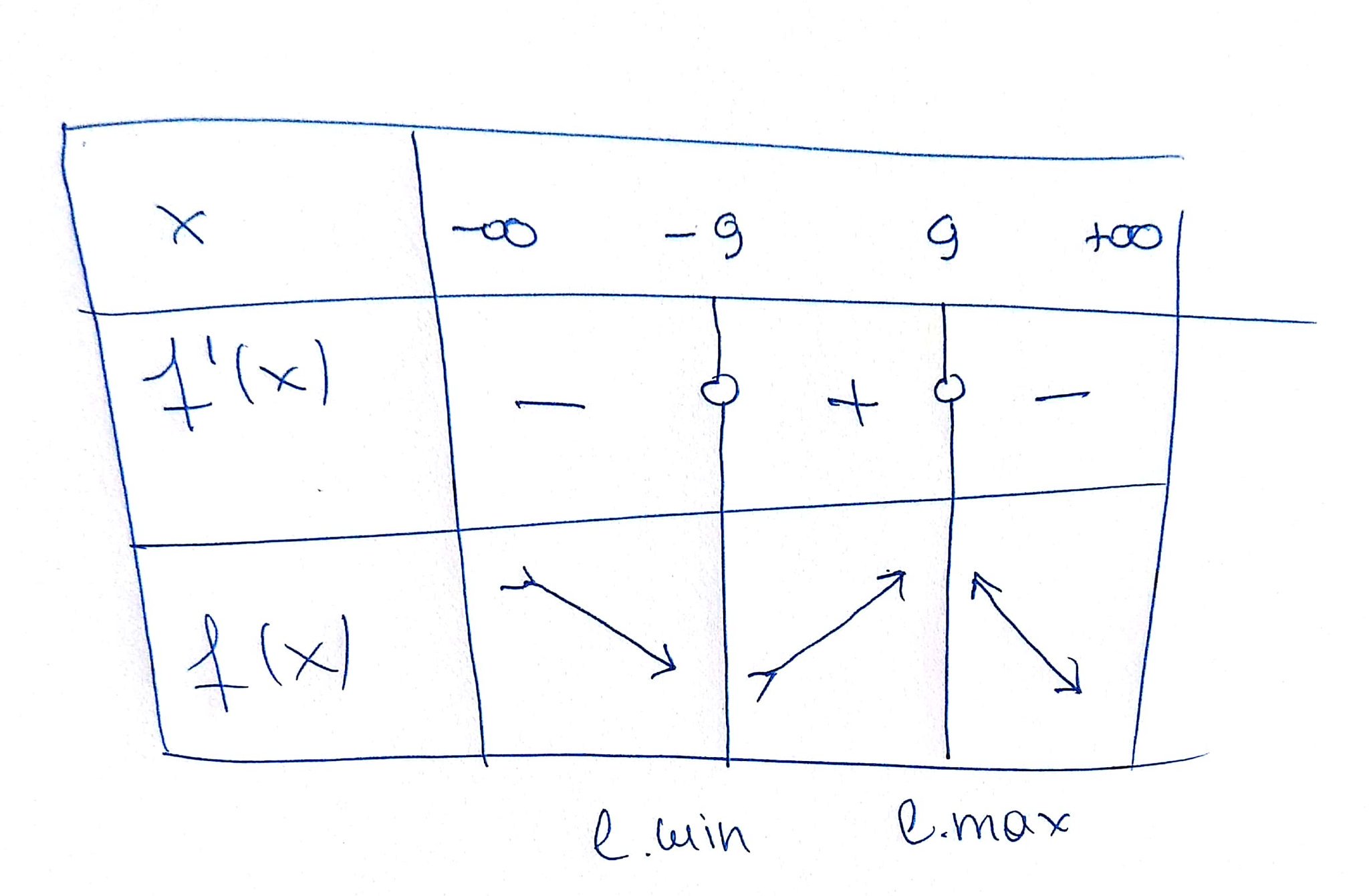How do you find the local maximum and minimum values of #f(x) = x / (x^2 + 81)# using both the First and Second Derivative Tests?
1 Answer
Minimum
Explanation:
#f'(x)=(x^2+81-x(2x))/(x^2+81)^2# #=#
Let's plug in
we get
Let's plug in
we get
Let's plug in
we get
As a result we have:
-
#f# continuous in#(-oo,-9]# and#f'(x)<0# for#x# #in# #(-oo,-9)#
so#f# is strictly decreasing in#(-oo,-9]# -
#f# continuous in#[-9,9]# and#f'(x)>0# for#x# #in# #(-9,-9)#
so#f# is strictly increasing in#[-9,9]# -
#f# continuous in#[9,+oo)# and#f'(x)<0# for#x# #in# #(9,+oo)#
so#f# is strictly decreasing in#[9,+oo)#
therefore
therefore


